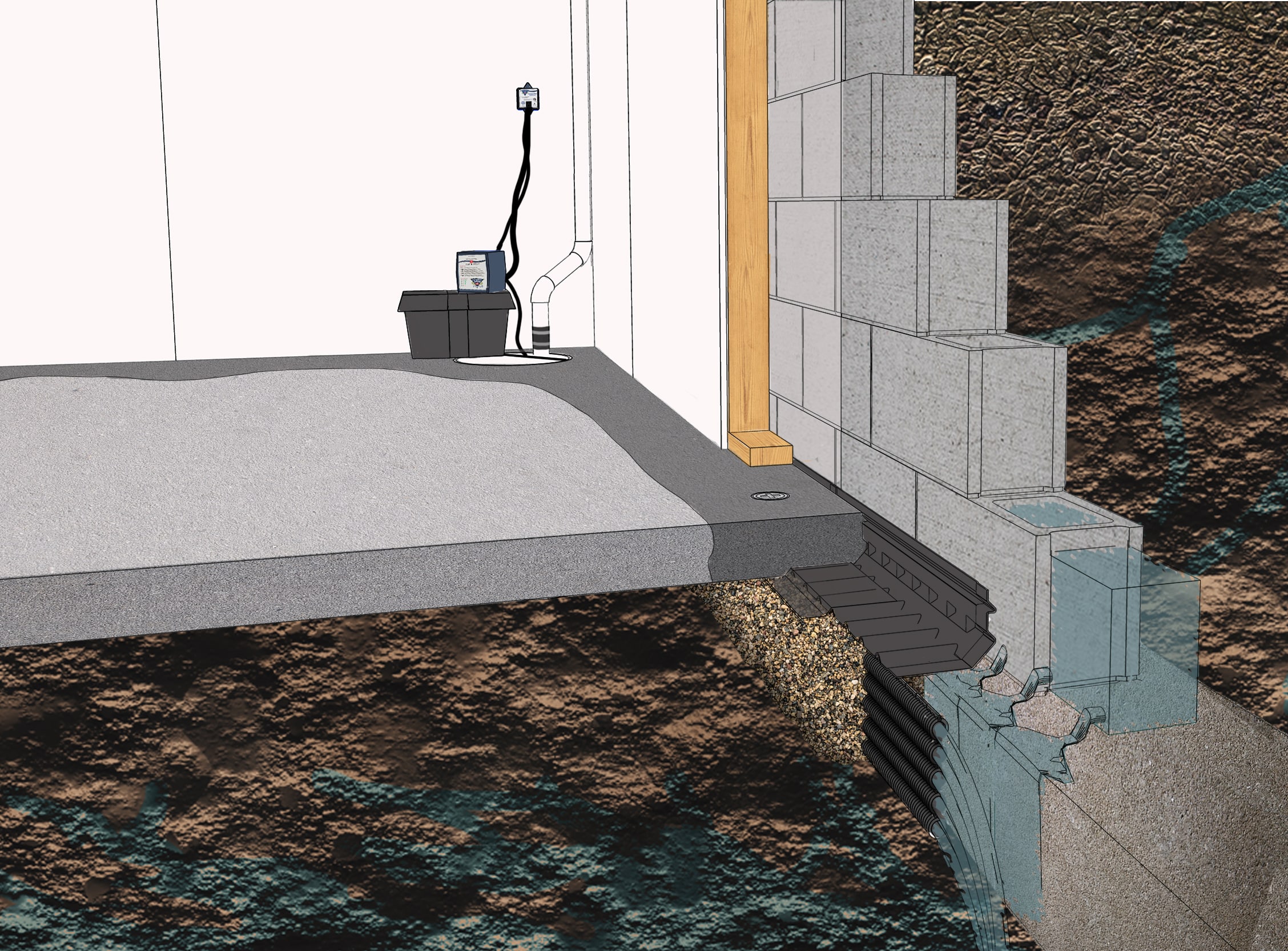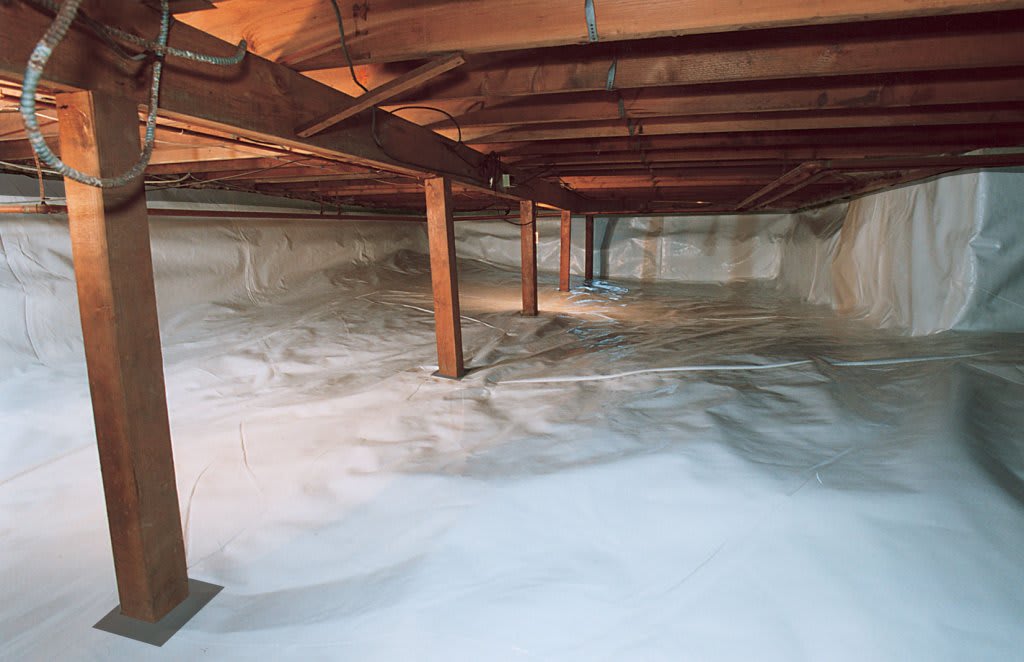Leaky Basement Toronto: Trusted Solutions for Waterproofing Your Basement
Leaky Basement Toronto: Trusted Solutions for Waterproofing Your Basement
Blog Article
Recognizing the Importance of Foundation Waterproofing for Long-Lasting Structural Stability
In the realm of home upkeep, structure waterproofing stands as a crucial element in protecting architectural stability. While often forgotten, the threats presented by water invasion can lead to costly and substantial damage that threatens the very structure of a structure. Recognizing the nuances of waterproofing can reveal exactly how it acts as an essential protection system versus these dangers.
Dangers of Water Intrusion
Water intrusion's effect on a structure can be significant, leading to a host of possible issues that compromise the stability of a building's structure. As dampness seeps into the structure, it can compromise the architectural parts, resulting in cracks and disintegration over time.
Additionally, water breach can add to the degeneration of building materials. Furthermore, water invasion commonly leads to enhanced humidity levels within the structure, which can influence electrical systems and other framework.
One more considerable threat related to water breach is soil instability. Excess dampness can alter the make-up of the dirt surrounding the structure, resulting in irregular settling and additional structural damage - Leaky basement Toronto. Immediately attending to water breach is critical to maintaining the long life and safety and security of any type of structure

Benefits of Waterproofing
Implementing foundation waterproofing is a vital action in shielding a structure from the destructive effects of water breach. One of the key benefits of waterproofing is the preservation of architectural honesty. Water seepage can deteriorate the structure, causing cracks, compromising the total framework, and possibly causing pricey repairs. By producing a barrier against moisture, waterproofing aids keep the foundation's toughness and toughness over time.
Additionally, waterproofing substantially enhances interior air top quality. Moisture seepage can promote mold and mildew and mold development, which not only damages structure products yet also presents health and wellness risks to passengers. An appropriately waterproofed foundation lessens these threats, adding to a healthier interior setting.
In addition, waterproofing boosts building value. A well-protected structure is an eye-catching feature for possible buyers, as it indicates proactive upkeep and decreases the probability of future structural issues. This financial investment not just safeguards the present state of the building however likewise includes lasting worth.
Finally, foundation waterproofing adds to power effectiveness. By avoiding dampness from going into the structure, it assists in keeping regular interior temperatures, thus decreasing the requirement for too much heating or air conditioning and bring about power savings.
Typical Waterproofing Approaches
When it comes to securing a building's foundation, choosing the suitable waterproofing method is critical for efficient defense versus wetness invasion. One of the most typical techniques is the application of liquid waterproofing membrane layers.
An additional prevalent approach is the installment of sheet membrane layers, which are pre-formed sheets of water resistant material, frequently bitumen or polyvinyl chloride (PVC), that are stuck to the structure wall surfaces. These sheets give durable defense and are specifically reliable in locations with high groundwater levels.
Cementitious waterproofing is one more widely-used solution, especially in new buildings. This includes using a cement-based compound combined with additives to create a waterproof coating. It is very easy to use and economical, making it a popular choice for domestic structures.

Signs of Structure Damage
To maintain the stability of a structure's foundation, recognizing the signs of potential damage is as important as selecting the suitable waterproofing methods. One of the most apparent indicators of foundation damage is the look of fractures in the wall surfaces, floors, or foundation itself.
Uneven floors are another common sign, normally triggered by the settling or changing of the foundation. House owners might additionally discover home windows and doors coming to be challenging to close or open, suggesting possible misalignment as a result of foundation motion. Water invasion indications, such as wetness, mold and mildew, or mold in the basement, suggest insufficient waterproofing or drainage concerns, which can intensify structure issues.

Picking the Right Contractor
Choosing the appropriate service provider is essential for making sure successful structure waterproofing tasks. Begin by investigating prospective specialists with a proven track document in foundation waterproofing.
Request recommendations from previous clients to get insight into their expertise and dependability. Additionally, review online ratings and endorsements to get a broader understanding of their reputation. It is very important to get several estimates to contrast prices and scope of job used by each professional. Be cautious of estimates that are considerably lower than others, as this might suggest substandard materials or craftsmanship.
Verify their understanding of local structure codes and policies to stay clear of possible conformity issues. More Bonuses By taking these steps, you can pick a specialist that will certainly provide top quality, long lasting waterproofing options.
Conclusion
Structure waterproofing is necessary for keeping structural stability and protecting against prospective damage created by water intrusion. By applying efficient waterproofing approaches, the threats of mold and mildew growth, material wear and tear, and see it here soil instability are substantially minimized.
In the realm of residential property upkeep, structure waterproofing stands as a crucial aspect in securing structural integrity.Executing structure waterproofing is a crucial step in safeguarding a building from the harmful impacts of water breach. One of the most obvious indicators of structure damage is the look of splits in the walls, floorings, or foundation itself. Water intrusion signs, such as moisture, mold, or mold in the cellar, recommend poor waterproofing or water drainage problems, which can exacerbate foundation issues.
Foundation waterproofing is vital for maintaining structural stability and stopping prospective damage created by water breach. - foundation waterproofing Toronto
Report this page